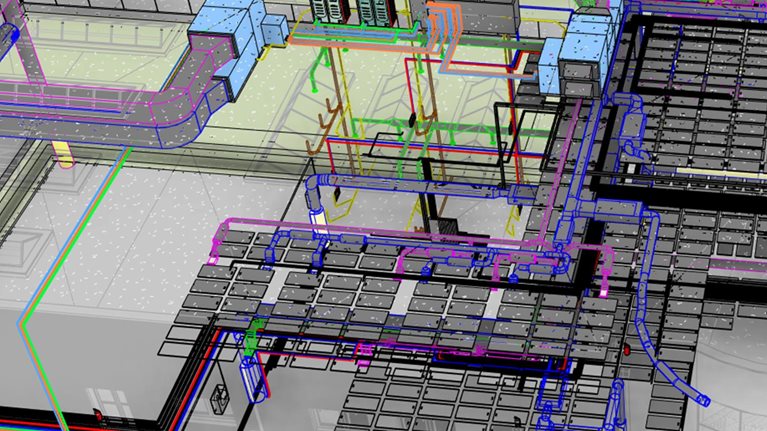A multibillion-dollar oil and gas megaproject that included state-of-the-art offshore and onshore facilities was in trouble. Onshore civil construction was over budget and late, resulting in daily losses of more than $1 million, not counting losses from delayed revenues and potential delays of costly prefabricated modules. Only by doubling weekly progress and productivity—in the face of increasing construction complexity—could the project leaders reach their end-of-year target.
This scenario may sound familiar to capital-project owners and the engineering, procurement, and construction (EPC) teams charged with delivering them. Megaprojects are rife with complexity and immensely difficult to complete on time and on budget. Compounding the challenge, megaproject complexity is rising, with budgets increasing and a growing number of organizations involved globally. This increasing complexity often impedes collaboration, making it difficult to share critical information and mitigate or forestall risks.
To make better decisions, and thus improve outcomes, leaders and project teams need timely and transparent access to critical project information and insights. A data-enabled, analytics-based project delivery hub (PDH) can help owners and EPCs objectively develop perspectives on project risks and reveal opportunities to improve project performance or accelerate delivery—or both. Delivering the full benefit of a PDH will typically require capability building in areas such as data exploration, transformation, and analysis, plus agile development, interdisciplinary teamwork, and others.
In the oil and gas example above, the project owners credit the insights provided by the PDH with helping to get the project back on track; indeed, onshore activities were completed ahead of schedule, and the project captured more than $75 million in value.
The nature of complexity
Numerous factors account for the growing complexity of megaprojects. For one, project budgets are sharply increasing along with the number and size of the organizations involved. Increasingly global project consortiums—often including large networks of subcontractors—and intricate supply chains also contribute to growing complexity. For example, an outsourced engineering team based overseas is apt to contend with communication challenges compared to a local team, given differences in language, time zone, and culture. Moreover, supply-chain disruptions lasting a month or longer now happen every 3.7 years, on average, according to a McKinsey study.1 Shorter disruptions happen more frequently and in most cases result in delays to tight project timelines.
As megaprojects and their ecosystems have grown bigger, the volume of project data has exploded and data networks have grown more interdependent. Detailed data sets are often scattered across the ecosystem and can be difficult to collect, integrate, and distill into insights that can inform decision making.
In a simple example, a supplier of raw materials will ship goods to a supplier that manufactures critical components, which are then shipped to another site for assembly into a product that is finally shipped to the project site for installation. Delays at any stage of the value chain will have knock-on effects that the project team needs to manage. In the context of a globally sourced megaproject, the number of value chains, interrelated activities, dependencies, and so on is almost immeasurable.
Finally, project disruptions caused by natural disasters, political strife, or other uncontrollable events add yet another layer of complexity to megaprojects. In perhaps the most extreme example, the COVID-19 pandemic wreaked havoc in unprecedented ways; global supply chains became almost impossible to map, and shutdowns continually shifted by country and time period.
This growing complexity introduces blind spots for top management. The lack of transparency leaves them in the dark or dependent on others (for example, EPC teams or subcontractors) for information that is critical to their understanding of project performance and risks, compromising their ability to make good decisions in a timely manner. Too often, they and their teams reactively cope with day-to-day issues rather than anticipating and resolving them quickly.
The oil and gas megaproject team confronted many of these complexities, including the following: a global joint-venture owner team and EPC teams; construction in a remote location; variable scope with significant onshore, offshore, and pipeline facilities; cost and time challenges resulting from underperformance by contractors; and more.
By directly tackling this information complexity and building capabilities to address it, project owners and EPC leaders can avoid the derailed schedules and costly overruns—sometimes as much as two or three times original estimates—that jeopardize project success.
Would you like to learn more about our Operations Practice?
Enter the project delivery hub
A centralized PDH can be highly effective in providing top management with much-needed transparency across the complex ecosystem. The hub is effectively a group of named individuals from each function associated with the project—design, finance, procurement, engineering, and construction, among others—who roll onto and off the PDH team as their expertise is needed during each project phase. The commitment to build a PDH may take place as part of a broader operating-model review.
Acting early to set up a PDH increases the likelihood of successful project execution. By receiving critical insights from the PDH as soon as issues begin to arise, top management can introduce countermeasures or devise ways to capture newly identified value.
If the project is already under way, the answers to the following three questions can help determine whether establishing a PDH would be beneficial:
- Is the project on time and on budget?
- Is everything being done to identify and deliver the project’s full potential?
- If the answer to either of the first two questions is “no,” does the project have enough firepower (highly capable resources) to deliver insights and effectively translate those insights into actionable improvement interventions?
Once established, the PDH combines cutting-edge technology with relevant project data and functional expertise to provide analytics-driven insights. This approach bolsters understanding of performance throughout the project life cycle, identifies risks and opportunities, and targets specific areas for interventions with on-site field execution programs. Regular daily, weekly, and monthly performance management check-ins provide opportunities to identify risk countermeasures, track their execution, and review their impact on cost and schedules—all in a virtuous loop. An ongoing commitment to capability building ensures continual performance improvements and sustained business value.
To get the oil and gas project back on track, top management and project leaders introduced a PDH, which aligned all contractor and subcontractor plans to a required project sequence. The leaders then increased the end-of-year delivery target by 20 percent and aligned the project master plan to meet it.
Insights from the PDH were used to identify risks and respond with targeted mitigation activities in the field. The PDH set targets for weekly progress based on the latest productivity improvements, and it deployed advanced production-planning-and-control software to help anticipate potential roadblocks.
The role of the PDH
PDHs bolster project transparency and provide a single source of truth. Using a combination of project data (daily, weekly, or monthly, depending on the source of information and the insights required), key performance indicators (KPIs), and analytics, PDH teams keep executives apprised of project progress and rapidly align stakeholders on the most important metrics, including cost and schedule. The PDH team should also have visibility into the physical work, as it is taking place, to quickly identify sources of underperformance—for example, production gaps, bottlenecks, capacity losses, variability, and productivity losses—along with their root causes and should work closely with the line organization to develop and enact countermeasures (Exhibit 1).

In the oil and gas megaproject, by assessing the weekly variability in a trade—for example, steel production—the PDH identified opportunities to save more than 500,000 work hours for the remainder of the project. This result was a win–win for the owner and EPC contractor because it accelerated the production schedule without adding costs to the contractor.
The PDH team is also well positioned to identify opportunities to maximize project potential. For example, a contractor may set a target productivity rate based on assumptions about resource requirements and time. The PDH can help identify (through internal and external benchmarking, process analysis and redesign, and so on) that the productivity rate could be doubled, cutting resource needs and execution time in half without adding costs.
Meanwhile, cross-functional, agile delivery teams still fully own project delivery, drive day-to-day progress, and commit to milestone dates, but they leverage PDH insights to ensure inputs are on time (for example, drawings, parts, equipment, and people), anticipate issues, implement countermeasures, and track outcomes. The PDH model also has a dedicated role to mobilize agile “boosters,” who supplement delivery teams, to drive focused interventions to resolve a major issue, eliminate a risk, or capture a major opportunity (the equivalent of “kaizen” continuous-improvement teams in manufacturing).
For the oil and gas project, delivery and booster teams applied insights from the PDH to implement interventions in the field, such as shop-floor excellence actions that increased tool time and lean-construction methodologies that changed the sequencing of concrete activities. At the same time, the PDH monitored the outcomes of these efforts, identified further opportunities, and supported deeper coaching of discipline subject matter experts—creating an ongoing cycle of improvement.
A PDH can also support project teams in building capabilities—for example, using anticipating and steering activities based on production-rate data—to complement classic milestone-based tracking of progress and provide practical guidelines for contracts and contractor management.
The PDH approach requires a shift in leadership and project-team mindset to prioritize anticipating rather than reacting to problems and continually improving performance. By embracing this shift—with a combination of heightened ambition and improved planning and execution—the oil and gas project owners’ onshore construction team achieved its target six weeks early, a value of more than $75 million, and reached the 20 percent increase by end of year.
Other megaprojects have benefited from setting up a cross-functional team to improve project performance. A mining project under way in a remote location historically known for poor construction execution was struggling with cost and schedule overruns during the late stages of the project. A team comprising an analyst, director of project controls, delivery general managers, and project vice president convened daily and leveraged analytics to understand the drivers of rapidly emerging issues and determine their impact on costs and schedules. This enabled the project vice president to implement targeted interventions to reduce overruns and delays.
In yet another example, a utility distribution company was constructing a multibillion-dollar pipeline with several contractors and EPCs supporting construction. One contractor’s financial distress and underperformance placed on-time delivery at risk, increasing the likelihood of significant cost overruns. A central contract-management office, whose primary function was to manage contract claims, was established prior to construction execution. Among its key activities, the team assessed the implications of de-scoping and replacing a contractor with a new partner. To fully understand the impact of this decision, the team worked with legal, project managers, the supply-chain function, and construction. The team scanned the market for contractors with the capabilities and competencies needed to undertake work and assessed the cost trade-offs and schedule implications of using various contractors.
The same team also assessed different contractor-compensation models to better understand a contractor’s propensity to walk off the job for nonpayment. In doing this work, it leveraged contract clauses to access financial data to verify claims of insolvency, tested contractor liquidity against cash flows (forecast versus actuals), assessed actual installed quantities and estimated deliver to understand true financial position, and determined where payments needed to be accelerated (or could be delayed) to avoid contractor bankruptcy.

The project of the future: The best ideas from the 2021 GII Summit
Getting started
Once a team is persuaded of the PDH’s utility, building an effective PDH from scratch calls for a deliberate approach. The following three steps are especially important: assembling the right team, empowering them with real-time data, and running analytics to derive insights and share them with both practitioners and top management. A fourth step—deploying insights in the field—will be discussed in detail in a planned future article.
Embed a cross-functional team
In the first step, leaders assemble a team of experts from across project functions—design, procurement, fabrication, logistics, construction, and project controls. This cross-functional team can break down common project silos and encourage communication, collaboration, and awareness across functional boundaries. Setting clear expectations for team members based on actionable KPIs and clear performance targets enables more frequent performance check-ins. Equally important is to empower the team to identify and raise risks and recommend project improvements, while encouraging and rewarding problem solving that mitigates issues and uncovers new opportunities.
The unique needs of a project will determine the optimal location within the organization for the PDH, but, in any case, establishing it in conjunction with the EPC will further enhance transparency and collaboration throughout the project. There are several possible structures, each of which involves trade-offs.
Embedded as part of an existing project-controls group. The PDH can leverage and enhance existing project-control functions and reporting. This structure works well if the project-controls group is already functioning at a relatively high level, meaning that it is 80 percent focused on future risks and opportunities and 20 percent on analyzing past outcomes. On the downside, this placement may discourage participation by other project functions, such as engineering and construction, which may perceive PDH activities as solely the responsibility of the project-services function.
Reporting directly to the project director. This structure, under which the PDH is considered equal in importance to all other project functions, encourages active participation and ownership by the entire project team. Issues can be escalated and resolved quickly. On the downside, some project stakeholders may view it as duplicative of the existing project-controls function.
Reporting directly to the CEO. This structure provides the CEO with high visibility across the full scope of the project. It may be necessary only if the project is distressed and the CEO needs rapid intelligence and insights to make time-critical decisions.
Empower the team with real-time data
Data are the fuel for the analytics engine. Teams can source data broadly from across the project, including schedules, reports, equipment lists, real-time field or engineering-office progress and quantities, site reports, supplier schedules, and fabrication reports and metrics, among others (Exhibit 2). Challenging and testing the quality and fidelity of the data—preferably by cross-referencing with primary sources, such as field reports—are essential in seeking the truth on project progress.

External sources of data—for example, publicly available shipping, logistics, and geospatial data—can unlock new insights into project performance. Historical project-performance databases can provide invaluable insights when estimating future performance. And several of the latest techniques and tools, such as digital twins that use lidar scanning and drone imagery to compare actual progress to project CAD models, can monitor project progress remotely so that reporting better matches the physical reality of progress on the ground.
Run analytics to assess project progress
The PDH team and project teams are charged with rigorously analyzing actual project data compared to established performance metrics—challenging its accuracy if needed—to identify key project insights and risks that can then be solved in real time. A rolling three-, six-, and more than nine-month view of likely outcomes, potential risks, and opportunities for improvement provides further discipline in project oversight.
Successful delivery of increasingly unwieldy megaprojects calls for a fresh management approach. A leader-led project delivery hub, fueled by data and analytics, can help offset risks and illuminate opportunities—thus increasing resilience and helping projects stay on track. Although it is never too late to set up a PDH to rescue a faltering project, embedding one at the outset can avoid countless costly, time-consuming delays and maximize project value.


